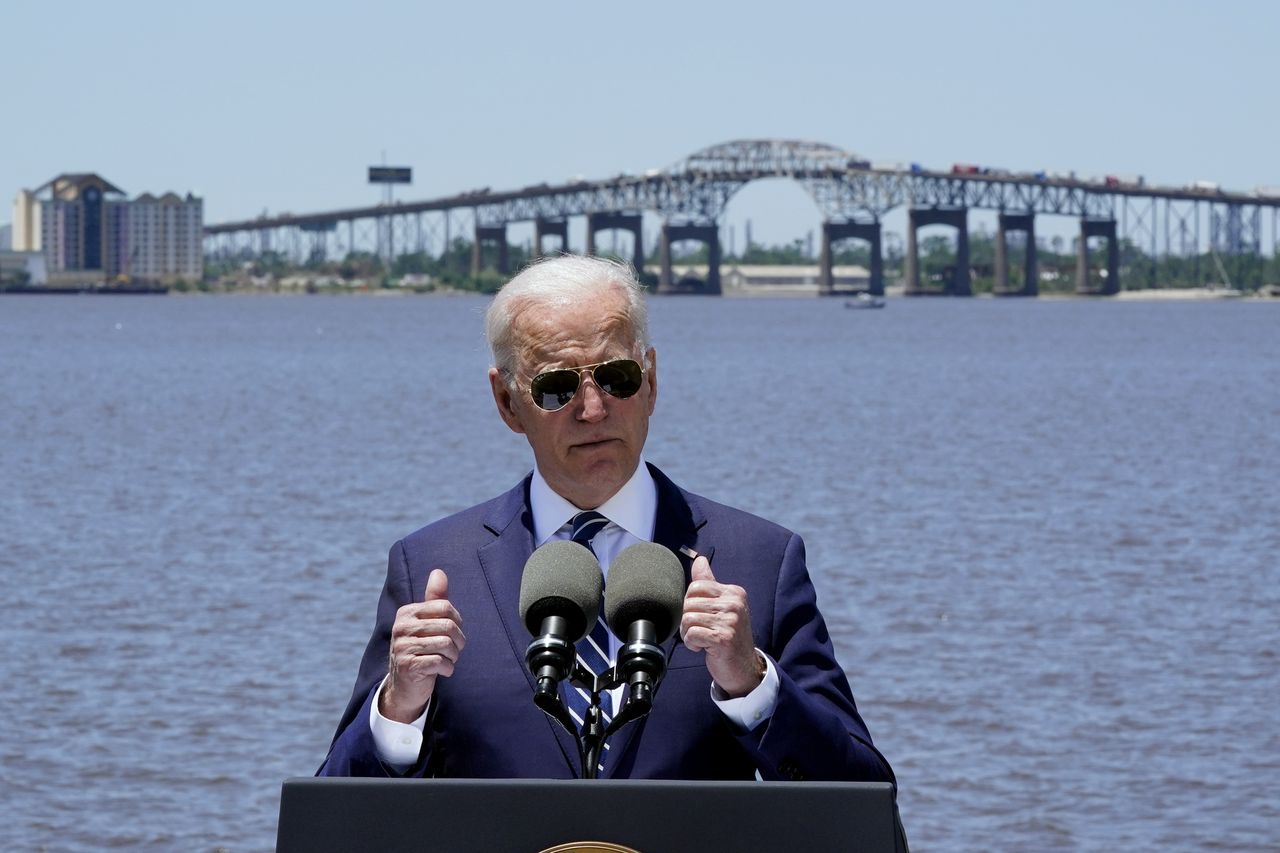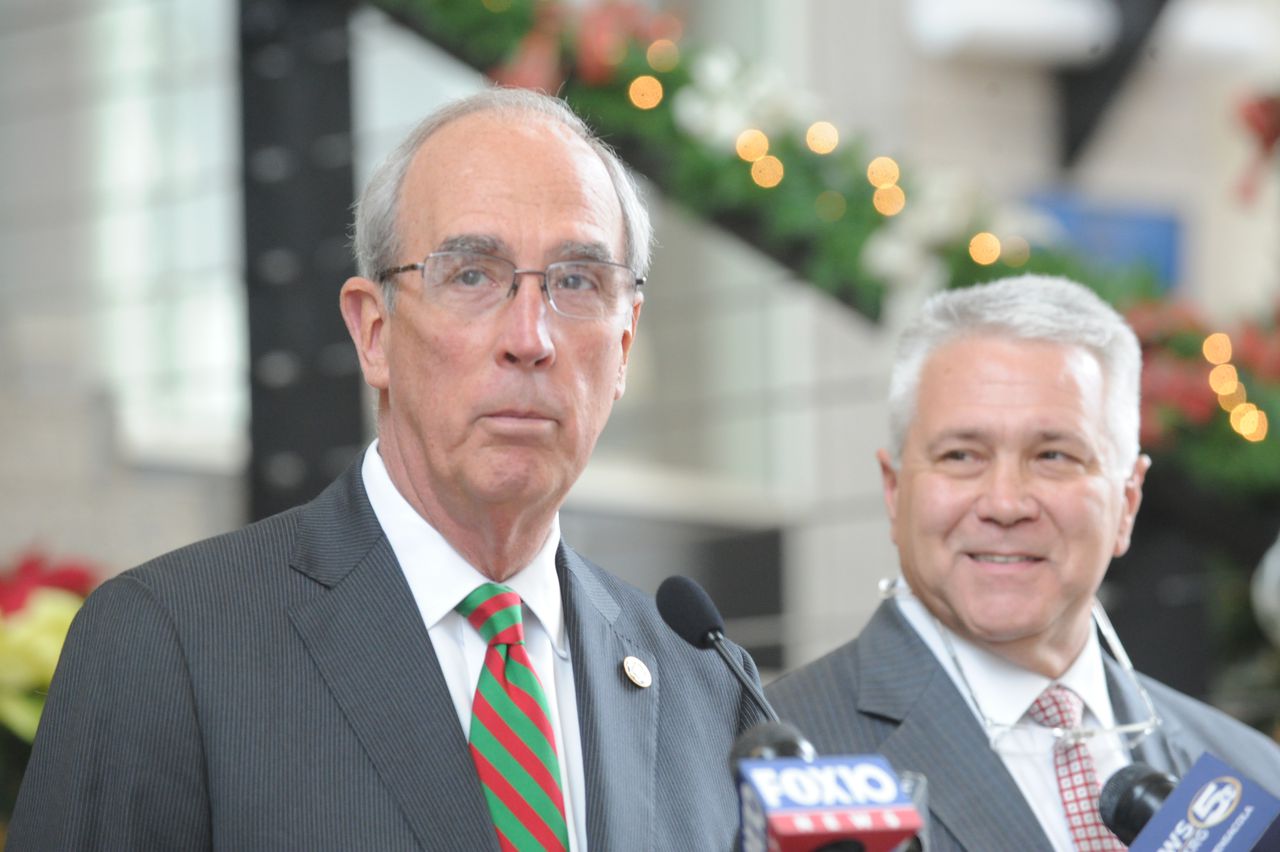‘Vote of confidence’: Feds to help state find I-10 project financing
Alabama’s most expensive road project in its history is on a short-list of projects the federal government views are strong enough to warrant guidance during future rounds of grant funding.
State transportation officials, despite not receiving any of the $500 million in Mega grant funding it sought for the Interstate Mobile River Bridge and Bayway project along Interstate 10, view the federal agency’s consideration as a “strong vote of confidence.”
Related content:
The project is already viewed as financially viable despite not receiving the grant, and its design and construction is moving ahead. The $2.7 billion project includes a new bridge over the Mobile River and a rebuilt Bayway from Mobile to Daphne.
It’s now categorized as one of 13 projects eligible for “project-specific targeted technical assistance” from the U.S. Department of Transportation’s Build America Bureau.
The assistance is being offered after the U.S. DOT declined to award Alabama the $500 million Mega grant request submitted for the I-10 project in January. Only nine projects nationwide received $1 billion in initial Mega grant funding, out of more than 130 applications.
The guidance does not indicate any guarantee of future Mega grant funding. But it does give the project’s sponsors – the Alabama Department of Transportation – opportunities at project-focused workshops and brainstorming sessions to identify other grant and loan programs that can help finance the project.
For the next four years, the U.S. DOT will provide $1 billion each year for future Mega grant recipients.
“ALDOT continues to have substantive consultations with the U.S. Department of Transportation related to the Mobile River Bridge and Bayway project,” said Tony Harris, spokesman with ALDOT. “The selection by USDOT to provide additional technical assistance to ALDOT is a strong vote of confidence and a sign that the federal government sees value in the project both for the region and the country.”
‘Top 25′ project
The I-10 Bayway connects Mobile to Baldwin County. (file photo)
The I-10 project is the only project in Alabama to be among those receiving technical assistance. Examples of other projects also seeking future Mega grant funding, and also receiving technical assistance, include a high-speed rail project in California, enhancements to Union Station in Chicago, an interstate widening project in Virginia, bridge construction in Massachusetts, and port projects in South Florida and Oregon.
ALDOT will connect with the Build American Bureau, which serves as DOT’s “one-stop-shop” in serving as a point of coordination for states, municipalities, private partners, and other project sponsors seeking federal financing.
Qingbin Cui, a professor at the University of Maryland and an expert in transportation engineering and highway financing – who is also assisting in the development of a Build America Center that will offer resources to states on alternative transportation financing – said the I-10′s project inclusion for technical assistance means it’s “a Top 25, and probably higher” project awaiting consideration for future federal assistance.
“(The project) ranks very high which actually indicates that ALDOT put together a strong proposal on that project,” said Cui. “The U.S. DOT, when they are considering this project for technical assistance, (the agency) sees value moving the project forward.”
He added, “I would really consider it a great opportunity for the state to continue to work on this project and for the DOT to make that happen.”
Plusses, minuses

President Joe Biden speaks with the Interstate 10 Calcasieu River Bridge behind him, Thursday, May 6, 2021, in Lake Charles, La. The bridge project will be bolstered with $150 million in the first round of Mega grant funding. Only nine projects nationwide received the funding. (AP Photo/Alex Brandon)AP
One issue, Cui said, could be the grant request of $500 million, which would have been half of the overall $1 billion allocated during the initial Mega grant reward. None of the nine projects rewarded initial funding received more than $300 million.
“I think the state has considered all aspects to make a decision on how much they should apply for,” Cui said. “I cannot speak for anyone (with ALDOT) but my opinion here is that because the project has been identified for technical assistance, the best strategy for the state of Alabama is to work with the U.S. DOT and … they can provide the best recommendations to move forward either with federal grants and a federal loan program or other options there.”
According to a DOT assessment, the I-10 project did not meet a number of statutory requirements needed to receive Mega grant funding. The project proposal, according to DOT, was not cost effective and that the project sponsor does not have the sufficient legal, financial, or technical capacity to carry out the project.
But the federal agency, in granting the project technical assistance, says the project is strong in “economic impacts, freight movement, and job creation” along with “climate change, resiliency, and environment” and also “equity, multimodal options and quality of life.”
Cui also said the project lies along a stretch of interstate that “has high national significance.”
Two of nine projects to get initial Mega grant funding are along I-10: $60 million to improve the interstate near Diamondhead, Mississippi, and $150 million to support upgrades to the Calcasieu River Bridge in Lake Charles, Louisiana.
“If you consider I-10, it’s very critical,” he said.
Financing opportunities
He also noted that the I-10 project falls within an area that could be labeled a “historically disadvantaged community,” which would make it eligible for other grant sources through DOT such as the RAISE discretionary grant program.
“I would say the entire state of Alabama is a disadvantaged community, and (ALDOT) can leverage this and benefit from the federal grant programs under the bipartisan infrastructure law,” said Cui, a former professor at the University of Alabama.
He added, “It’s a good opportunity for the state of Alabama to pursue federal grants. The Build America Center would like to support any public agency in the state of Alabama.”
ALDOT, to this point, has secured one federal grant for the I-10 project: A $150 million Infrastructure for Rebuilding America (INFRA) Act grant awarded to ALDOT through former U.S. Senator Richard Shelby’s office in 2019.
An additional $250 million is secured through state funding, and a federal $300 million loan is expected to be repaid through a toll plan that includes an unlimited trip option of $40 a month for motorists with an ALGO Pass.
The lion share of the I-10 project could be financed through the federal government’s Transportation Infrastructure Finance and Innovation Act (TIFIA) program that provides credit assistance to qualified projects of “regional and national significance.” Up to 49% of a project’s overall costs can be financed through new guidelines established by the TIFIA program that offer a 35-year fixed rate loan.
ALDOT has, since December, called the I-10 project “financially viable.” It submitted the Mega grant application last spring, and before the Metropolitan Planning Organizations in Mobile and Baldwin County’s Eastern Shore area added the revised project back into their short- and long-term planning documents.
The state has also pointed to the current TIFIA loan structure for making the I-10 project financially viable.
One alternative financing structure is unlikely to be considered again by ALDOT for the I-10 project. That program is a private-public partnership (P3), which the Build America Bureau promotes, but which was a key factor in a previous iteration of the I-10 project crumbling in 2019 amid fierce criticism over a prior toll plan structure.
Cui said there are other alternative financing structures ALDOT can pursue beyond a P3 structure. He said if the project can “reduce congestion and emissions,” then it could apply for Green Bonds that are issued to projects expected to deliver environmental benefits.
“There are all kinds of innovations from a project financing perspective,” Cui said.
Optimistic outlook

Mobile Mayor Sandy Stimpson speaks at a news conference on Wednesday, December 15, 2021, at Government Plaza in downtown Mobile, Ala. Next to him is Jack Burrell, a Fairhope City Councilman. The two outlined their support for a particular framework of the I-10 Mobile River Bridge and Bayway project at that time. Thus far, ALDOT has followed through on its commitment to work with the MPOs in developing the $2.7 billion project. (John Sharp/[email protected]).
Local officials are optimistic in ALDOT’s chances in securing future financing ahead of design and construction work expected to begin later this year.
Omaha-based Kiewit Infrastructure is in negotiations with ALDOT on a joint venture to oversee the design and construction of the new 215-foot-tall bridge over the Mobile River. A separate design-build contract will be rewarded later this spring on the 7.5-mile Bayway portion of the project.
A new Bayway will be constructed and elevated adjacent to the existing Bayway, according to the project’s plans. The existing Bayway will then be demolished.
“The I-10 Mobile River Bridge and Bayway project is critical to our region’s economic and quality of life,” said Bradley Byrne, president and CEO with the Mobile Chamber of Commerce, acknowledging there will be “four more opportunities” for the state to pursue Mega grant funds.
“Our region is making transformative improvements to our seaport and airport that will benefit everyone who lives and works in our area, and the bridge is a key component of our future success,” Byrne said.
Mobile Mayor Sandy Stimpson said he believes the project is “well-positioned” for additional federal funding.
“We feel confident that the federal government understands the national, regional and local importance of the project,” Stimpson said. “We already received one of the largest-ever INFRA grants and are well-positioned for additional funding. I’m please the project is financially viable and is moving forward within the MPO framework.”
